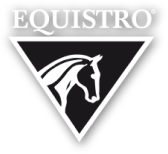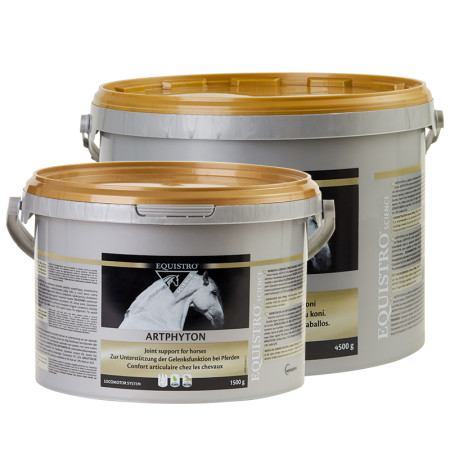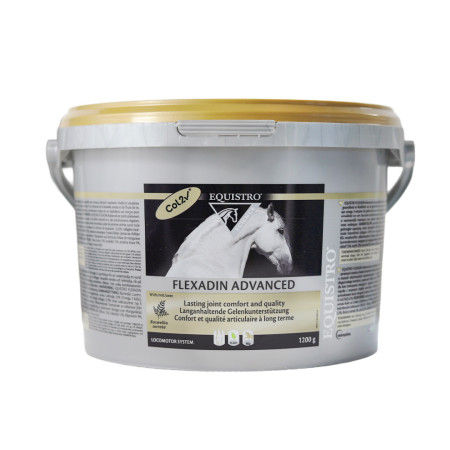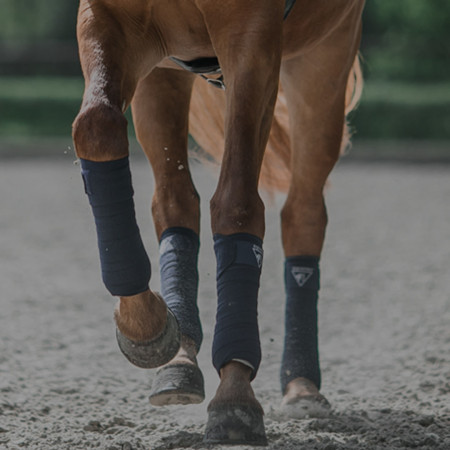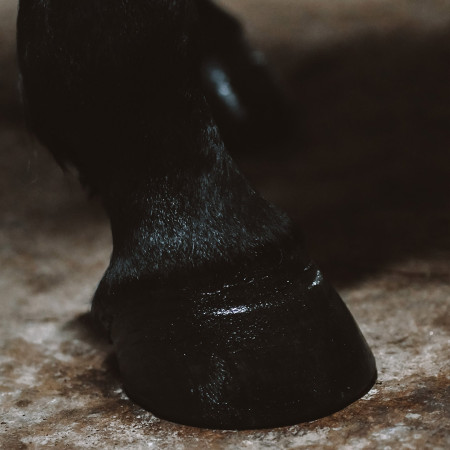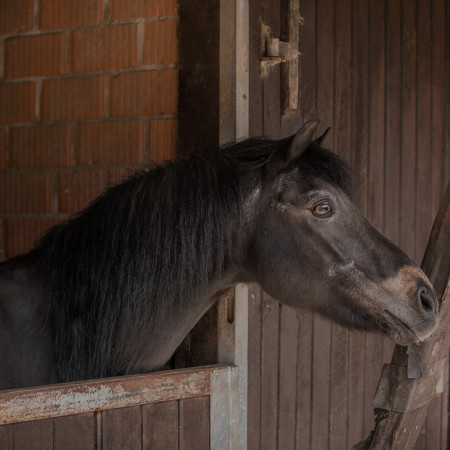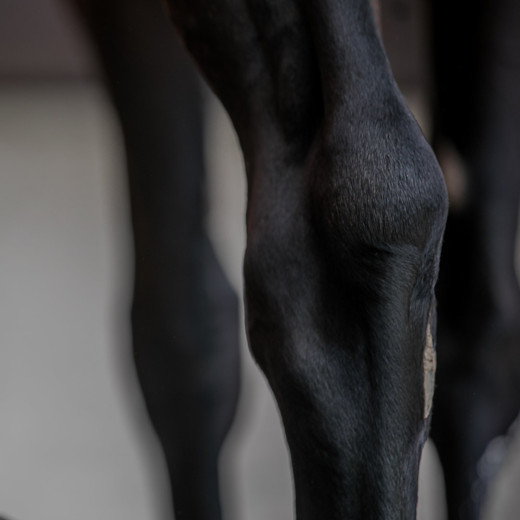
Arthritis
Osteoarthritis occurs frequently in horses and refers to a pathologic process associated with damage to the joint cartilage and remodeling of the bones involved in joint formation. Osetoarthritis is a degenerative condition, resulting from remodelling processes in the joint initiated by the immune systeme as a response to a causative agent.
What happens in the joint?
Heavy overstraining of the joint, genetic predisposition, joint instability, cartilage damage due to trauma or infection can trigger inflammatory changes that promote the early development of osteoarthritis. The first signs of this process can be observed in the joint cartilage layer that rests on the joint bone. Fragments from an overstrained or injured joint cartilage detach and are released into the synovial fluid. These fragments consist primarily of type II collagen and are mistakenly recognized by the horse's immune systems as foreign molecules floating in the synovial fluid. The immune system reacts to this and sets an inflammatory reaction in motion in which antibodies are formed. These antibodies fight the cartilage fragments, which leads to further damage to the joint cartilage, causing further joint inflamation.
As a result, the joint is painful, often felt hot from the outside and the horse is unwilling to flex it due to the pain.
Diagnosis
A careful exam of the horse may reveal first signs of an osteoarthritic process.
Clinical signs
An articular distension for example may be discovered with a detailed limbs palpation. An increase of the articular volume (swollen joint) can be attributed to an increase of synovial fluid, creatied by the inflammatory reaction in the joint. It can also be attributed to a thickening of the articular capsule and to osseous proliferations on the articular margins. Limbs manipulation may reveal articular stiffness.
A dynamic exam may reveal lameness, more or less important on a horse suffering from arthrosis. Standard presentation of arthrosis process on one limb is an exacerbated lameness at the beginning of the work and on a hard ground.
Although they are non specific, these signs would be the first to seek when arthrosis is suspected.
Further findings
Arthrosis suspicion is confirmed with imaging exams. Radiography and ultrasound are used to make the definitive diagnosis, but sometimes MRI scanner or even scintigraphy need to be performed to ensure an exact diagnosis.
Radiography exam will show osseous articular or peri-articular remodeling (osteophytes). On an X-ray, osteophytes look like anarchic osseous proliferations on articular margins. Affected joints may also present a reduced articular space, indicator of damages on the cartilage covering the bone.
Finally, last radiographic element is remodeling of the sub chondral bone (bone under the cartilage), consisting of increase or decrease of bone density on the X-ray.
Ultrasound can show cartilage damages, thickening of the articular capsule and synovial membrane hypertrophy and signs of articular inflammation. Osteophytes can also be diagnosed with this examination method.
Treatment
Once diagnosis is made, the treatment of arthrosis should contain many aspects.
Shoeing
First of all, a good trimming and shoeing is essential and should be made in close partnership between vet and farrier to optimizie the results, especially on the distal joints (foot, pastern, fetlock). With specific shoes, the articular bio-dynamic can be changed: stress like articular pinch during sharp turns will be decreased, leading to a pain decrease and to an arthrosis process development decrease. To reduce stress on the joints, a « rolling » shoe facilitates foot rocker and limits tensions during movement. Branches cover of the shoe can also be adapted to increase foot sinking on a soft ground on the side (intern or extern) of the arthrosis. It will reduce compression on the affected articular areas.
Training
Work should also be adapted. A regular and well-balanced work-out have to be set. Long rest periods have to be avoided if possible. A good warm-up and work on a soft ground have to be preferred.
Medication
In addition to these conservative measures, medical treatments are available to control the arthrosis process. Oral pain killers (e.g., NSAIDSs) may be used to control the pain. Mainly used during acute phase of the process, they reduce intra and extra articular inflammation.
Corticosteroids and hyaluronic acid intra articular injections can also be suggested to manage long term articular damages. Injections should be sparingly used to keep their beneficial effects effective.
As osseous remodeling are often detected during arthosis process, the use of biphosphonates can be appropriate to manage mild term pathologies. Decreasing the osseous inflammation, this molecule can reduce consequences on the arthrosic bone.
Novel therapeutics are born in the last few years such as IRAP (autologous serum stopping the inflammation cascade). It is acting as an anti-inflammatory drug and is produced by the horse himself. Many injections can be made in the affected articulation. The biggest benefit is not to induce unwanted effects on the articulation and not to be considered as a doping product.
Stem cells are subject of many scientific research about arthrosis treatment and first results seem to be promising.
Complementary feed support
Beside many herbal components, there are also some innovative molecues with scientific background available on the market of equine joint supplements like UC II® for instance.
Behind the name UC II® is a molecule that, due to its surface structure, is almost identical to the type II collagen found in articular cartilage. UC-II® can easily pass through the stomach and thus reaches the intestine undamaged. There, the immune cells localized here learn through daily feeding that this molecule is harmless and pass this information on to their immune cell colleagues in a joint plagued by osteoarthritis, among others.
These immune cells then signal to the immune system that the cartilage fragments floating in the synovial fluid do not need to be fought by antibodies, thus preventing further joint damage.
In this way, UC-II® can help stop the vicious cycle of processes set in motion by osteoarthritis. Even in horses with an already chronic form of osteoarthritis (osteoarthrosis), UC-II® - used in a supportive manner - can mitigate acute attacks.
According to the arthrosis degree, all of these treatments may increase comfort and extend the sport carreer, or offer a confortable retired life to your horse.
Dr. med. vet. Perinne Piat
Dr. med. vet. Caroline Fritz
